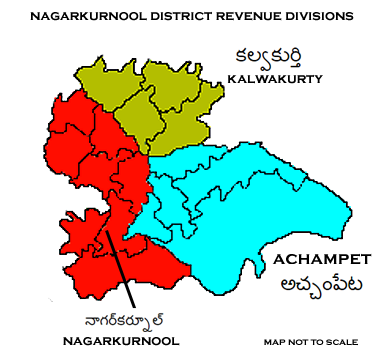|
Kodair
Koderu or Kodair is a village and Tehsil, mandal headquarters in Nagar Kurnool district, Telangana, India. Geography Kodair is at coordinates 16.2667°N 78.3000°E on world map. It has an average elevation of 371 metres (1220 ft) from sea level. Kodair is a village and mandal head quarter in Nagar Kurnoor district (it was Mahbub Nagar, before district reorganization) of Telangana state, previously united Andhra Pradesh State, India. It is km south of district headquarters Mahabubnagar, and 147 km south of the state capital, Hyderabad. Kodair Mandal is bounded by Peddakothapally Mandal to the east, Pangal Mandal to the west, Kollapur Mandal to the south, Gopalpet Mandal to the west. Nagarkurnool City, Wanaparthy City, Gadwal City, Badepalle City are the nearby cities to Kodair. Kodair consist of 35 villages and 15 Panchayats Khanapur is the smallest village, and Kodair is the largest village of all. Srisailam, Mantralayam, Nagarjunasagar, Hyderabad, ... [...More Info...] [...Related Items...] OR: [Wikipedia] [Google] [Baidu] |
Nagar Kurnool District
Nagarkurnool district is a district in the southern region of the Indian state of Telangana. The town of Nagarkurnool is the district headquarters. It was part of the Mahbubnagar district prior to re-organisation of districts in the state. The district shares boundaries with Nalgonda, Rangareddy, Mahabubnagar, Wanaparthy districts and with the state boundary of Andhra Pradesh with Nandyal, Narasaraopet, Palnadu and Prakasam Districts. History The Nagarkurnool district is historically, traditionally ruled by several empires in past. The evidence of monuments and inscriptions found near confluence of rivers Krishna River and Tungabhadra River reveals that it was an inhabited place since the Stone Age. Many places of this district have legendary history. The history of the district is divided into four periods, from Badami Chalukya till the Muslim invasion. Gona Ganna Reddy ruled Nandi vardhamana puram by making capital. Its near Village of Nagarkurnool. Gona Ganna Reddy was the ... [...More Info...] [...Related Items...] OR: [Wikipedia] [Google] [Baidu] |

